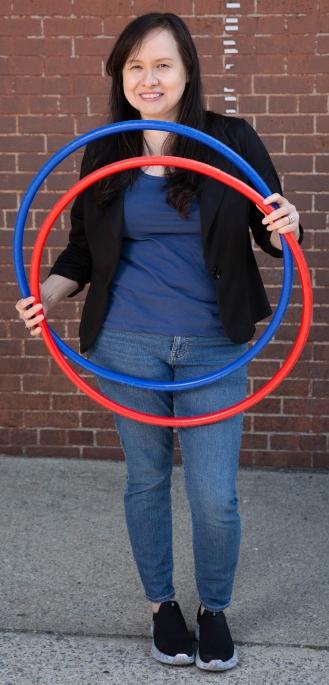
As a student teacher, Sorangel Acosta was “amazed and mesmerized” that it was possible to respect both languages equally in a dual-language class. She tries to bring that experience to the 3rd-graders in her English/Spanish classroom at PS 280 in Jackson Heights, Queens.
What distinguishes a dual-language classroom from a bilingual classroom?
In bilingual classrooms, both languages are used, but the goal is that, with time, English becomes the main language of instruction. In a dual-language classroom, both languages have the same importance — the goal is to develop biliterate individuals. There’s a big difference between bilingualism and biliteracy. Being bilingual means you speak two languages. When you’re biliterate, you can speak, read and write in both languages — I like to say you even dream in both languages.
What are some different models of dual-language education?
When I was a new teacher 11 years ago, we had a side-by-side model: two classrooms, with about 50 students total. I was the Spanish classroom teacher and my co-teacher was the English classroom teacher. Our students would switch every day. It took me longer to get to know the students, and I saw it as a disadvantage. I see the advantage now of the side-by-side model; I liked the collaboration between the teachers. We were able to bounce ideas off each other.
Now I’m in a self-contained dual-language program. I say I have arguments between my Spanish self and my English self! When you’re the one teaching both languages, you really get a sense of what dual language is because you get to see how students perform in each and how one language can help them acquire the other. I started out by switching from English to Spanish every other day and then I said to my principal, “I would like to try out teaching in one language for an entire week.” I tried it, and I have not looked back. It provides students enough time to anchor themselves in one language, take the skills and strategies they’ve learned in that language and transfer them to the other.
How do you adapt the curriculum for a dual-language class?
When I started, we were using Teachers College and they provided minimal support in Spanish. I was doing a lot of translation and trying to find Spanish texts. I would look at the teaching points and ask, “Which ones can I maximize in Spanish vs. English?” It was very important for me for students to have transference between languages in the same unit, not just teach an entire unit in one language and the next unit in the other. If I’m teaching about writing informational texts, for instance, and a student is writing about elephants in English, she’s writing about another animal in Spanish, so the work isn’t just a simple translation. Now we’re using a curriculum that has a Spanish component, and I’m asking myself, “How can I use translanguaging rather than just translating?”
What is translanguaging?
Translanguaging describes how people who are multilingual are able to draw on all of their languages to communicate. I recently went to the National Association for Bilingual Education conference and I thought this example was beautiful: Let’s say I’m teaching about dolphins, and I have books in English and Spanish that are exactly the same. I might teach the first four chapters in Spanish one week and then continue in English with chapters 5-8. What did we learn during our Spanish week that we can apply this week in English?
What’s your favorite part about teaching a dual-language class?
Once, during a Spanish week, we were reading a story about sea creatures, and later on I forgot how to say the name of a type of jellyfish in Spanish. A student who was English-dominant remembered it. It’s magnificent to see that ownership.
I didn’t see the power, the gift that knowing two languages provided me until I was an adult. They’re going to have so many advantages in life as biliterate individuals — multilingualism is the future.
— As told to Rachel Nobel